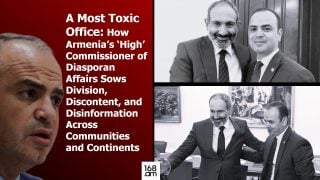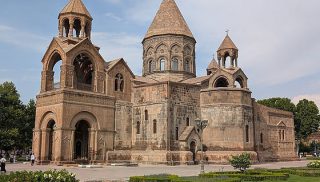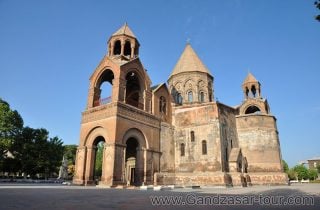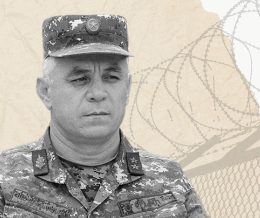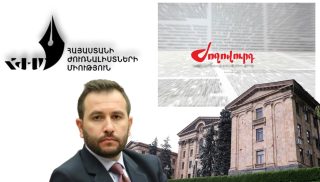
Armenia cannot stand with another period of stagnation
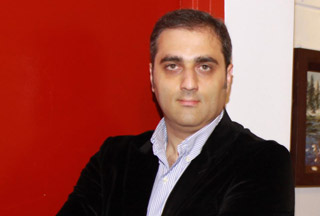
Interview with Haik Martirosyan, Doctor of political sciences, University of Sorbonne (New York)
-Mr. Martirosyan, how efficient are the presidential candidates’ campaign slogans?
-I think the institute of pre-election campaign slogans has been devastated. Not in Armenia only. In West campaign slogans consist of one word or generally do not exist. Probably those are actual during parliamentary elections, but as there are many candidates, they have to distinguish the messages they want to deliver to voters. Traditionally campaign slogans in Armenia are artificially made and developed by half-educated promoters, and very often those slogans are for half-educated candidates too, so it ends up with widespread promotion and influence of slogans. These are empty and low-quality slogans that often even are funny. The best campaign of our days is the one before Obama’s first election. The campaign had several slogans such as “Hope,” “Believe,” “Yes, We Can!” These simple words were the best messages ever used by modern political experts.
-How would you comment on the slogans of the RA presidential elections February 18, 2013? Serzh Sargsyan – Toward a safe Armenia, Raffi Hovhannisian – It’s possible or Let’s get united once, Paruyr Hayrikyan – Believe that the epic time has come, Aram Harutyunyan – I am one of you, Hrant Bagratyan – Only 100 steps for social justice, Vardan Sedrakyan – There is God in the sky. The rest of the two candidates stated Arman Melikyan and Andreas Ghukasyan mentioned that they’d release their slogans on the launch of the campaign, but so far there is nothing from them.
-The incumbent president understands that the country is unsafe from inside and outside. And it’s reflected in that slogan. It is laconic and expressive and there is some vagueness in that. Raffi Hovhannisian’s slogan is based on Obama’s model. It is only one word but means a lot and it contains a lot of hope. The second slogan is more like a petition. Hayrikyan’s slogan is invented on mortgage principle. First belief, then hopes but the slogan sounds a little meaningless. It doesn’t speak of platforms or issues. Aram Harutyunyan’s slogan is a little queer. If the candidate was a billionaire like the new Premier of Georgia, then this message would make sense. But everybody knows that the candidate is actually one of us. Thus, I don’t get the point. Bagratyan stays loyal to his principles and economic vision. It is a slogan targeted to a narrow group of people and resembles more like a government plan. Vardan Sedrakyan’s slogan is the most unique. Even Martin Luther King, who was also a religious leader, wouldn’t come up with that kind of slogan. A few phrases from the Armenian epos would make more sense for Sedrakyan’s slogan rather than the one he has now. I don’t know, maybe all this should be included in political science textbooks.
-Do these slogans and messages have a targeted audience? Who are they addressed to?
-The audience is the ones, who listen to these slogans. The voters are the stakeholders and they are addressed to them.
-Why do you think RPA slogan “Let’s believe to change” didn’t work, which resembled a lot the slogan of the US president Barack Obama? Moreover, a big group of the society became sarcastic about this slogan, who’d change it by saying, “Let’s change first then believe.”
-Slogans cannot work after elections. They express a plan and a mission. So these missions and platforms should work. The slogan works only during the pre-election period by help the candidate success or fail the campaign. The RPA’s slogan worked to the extent that the party won the majority of seats in the parliament. It is another thing whether it happened due to illegal methods of unequal conditions.
-By the way, according to you, how should the slogan be?
-The slogan should be maximum two words. Lofty and eloquent words belittle the point of the slogan and weaken the candidate of course if the constituents are active and care at all about the slogans.
-Do you see a crisis of ideology and platforms in Armenia?
-We would be blind not to notice this. It is the consequence of demoralization and hopelessness. The words don’t have any value in Armenia. And the crisis in Armenia is not economic.
-Nonetheless, why is political PR not working in Armenia? In this term, how would you comment on the PR campaign of the Armenian president? For example, months ago he came up with the image of a strict and admonishing leader but it had the opposite effect in the society.
-The current society of Armenia is a clan type of society, which is similar to Scotland. It comes from the size of the country as well as the mentality to a certain extent. Under these circumstances, everybody knows that the field is extremely small when the secrets stay a secret only one day. In these conditions speaking about PR technologies is spare. Besides, in tough financial and economic conditions the society mostly pays attention to material signals. Therefore, according to call calculations the agitation means are not that effective. As it’s known the Armenian president is not the first president of a CIS member state. Such examples are not few in the West either.
-Although in your last article you have mentioned how the Armenian president should be but I’d still ask you to comment on how the president should be. And if we assume that the incumbent is re-elected what developments can Armenia undergo?
-Let me paraphrase my thoughts. The president should be a leader. In the case of Armenia, 2013 anticipates double leadership. The elected president should undertake not only predictable but also unpredictable steps. That is the only way from the current situation. Predictable behavior will continue stability and stability often creates stagnation. And Armenia cannot afford another period of stagnation.
Interviewed by Marine Martirosyan





